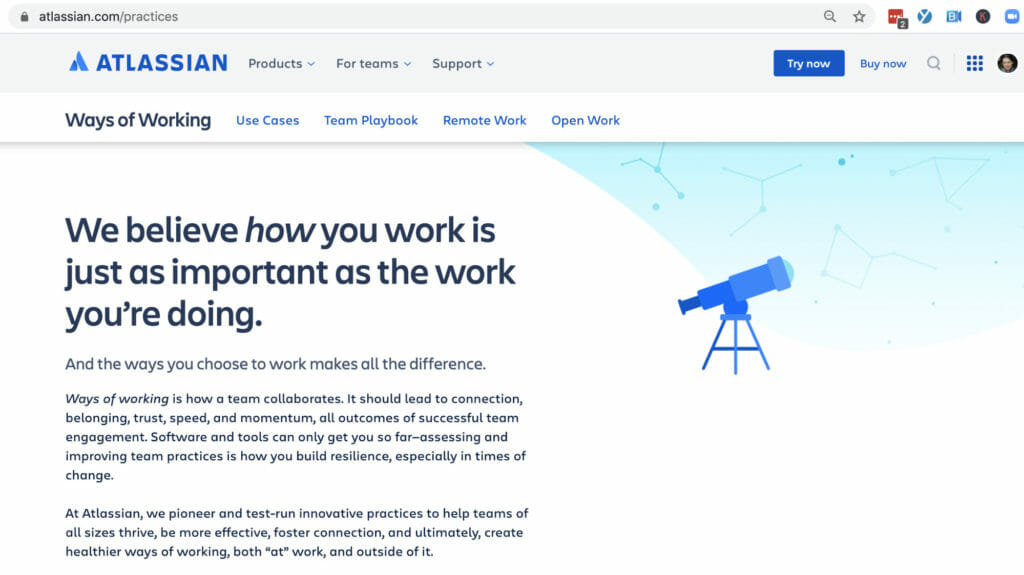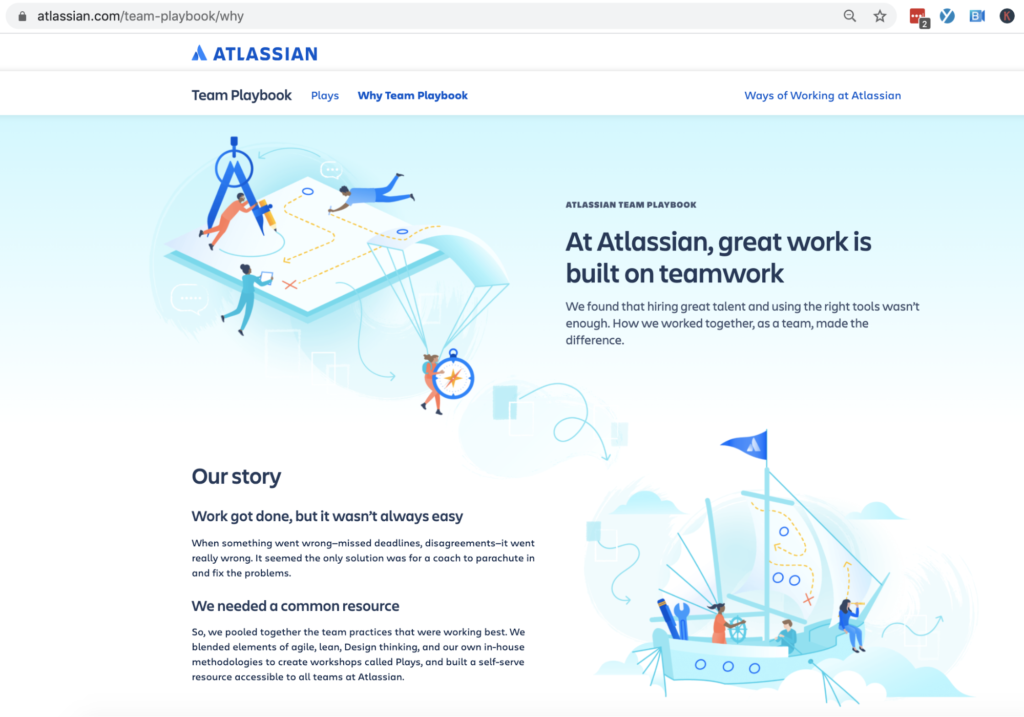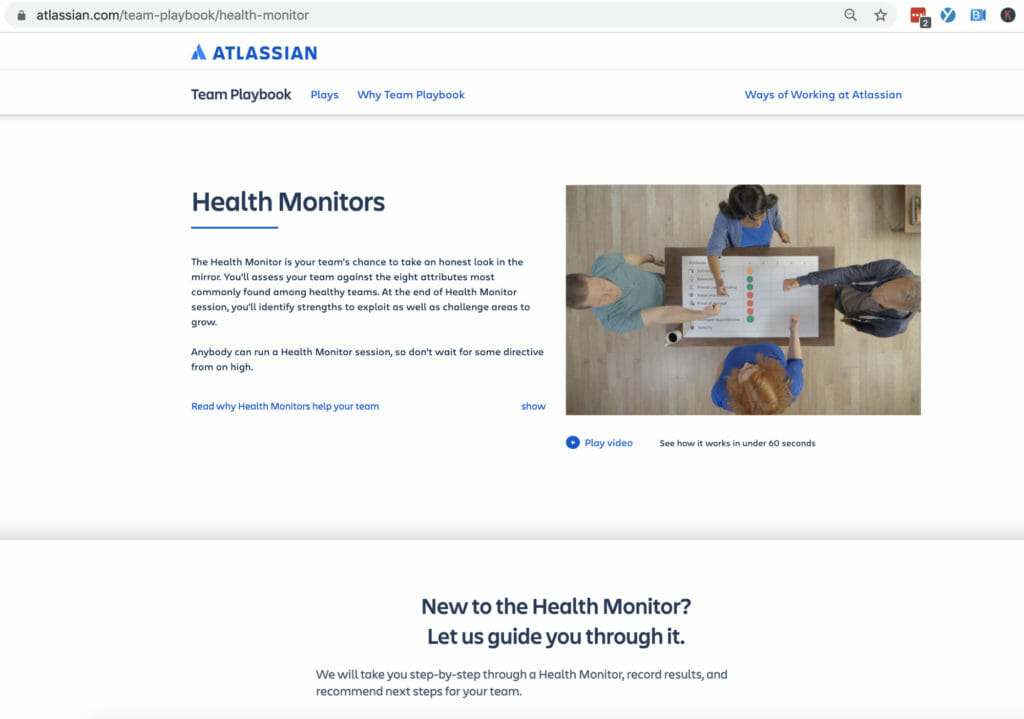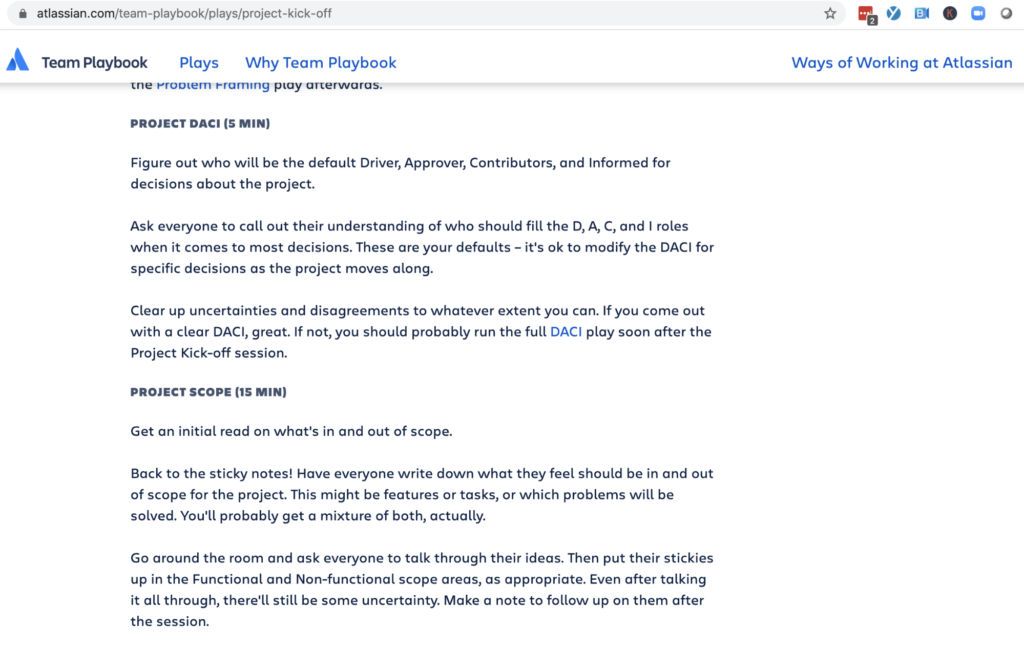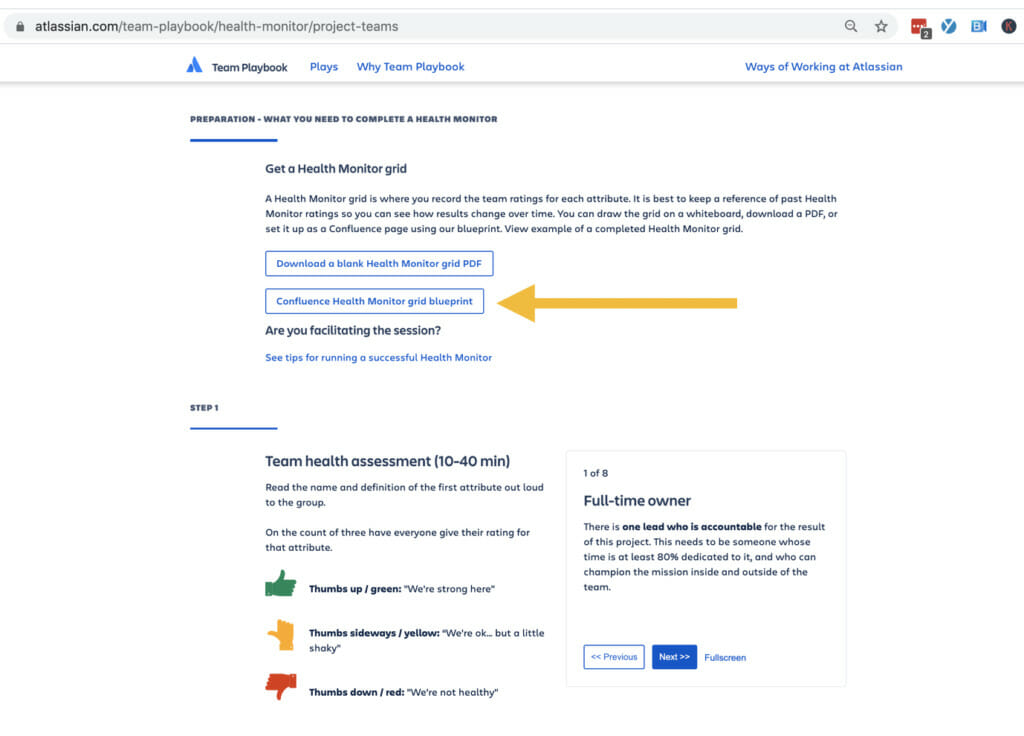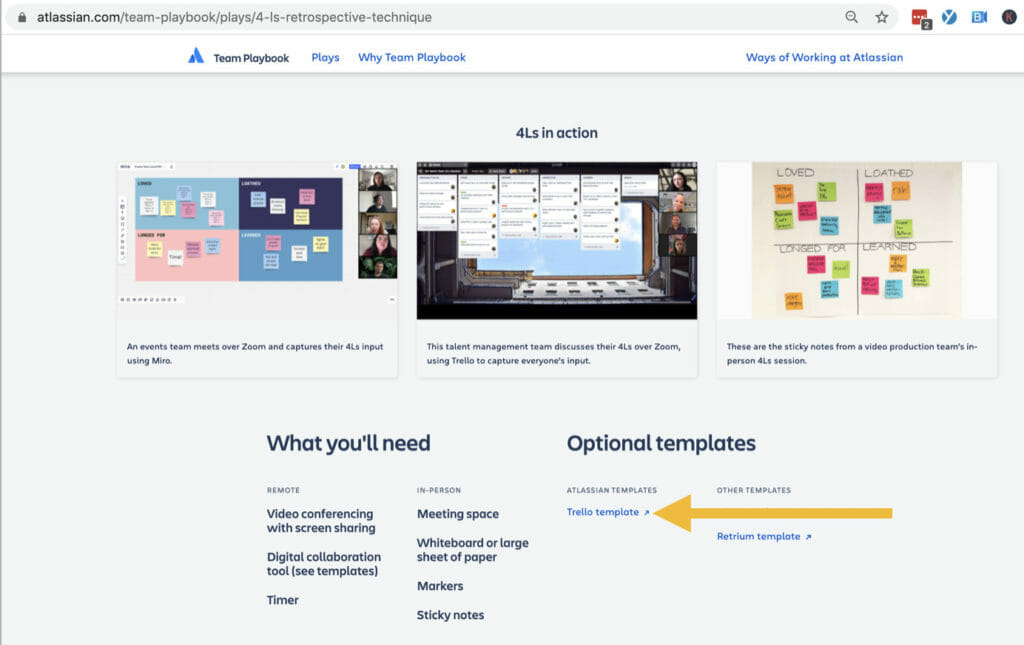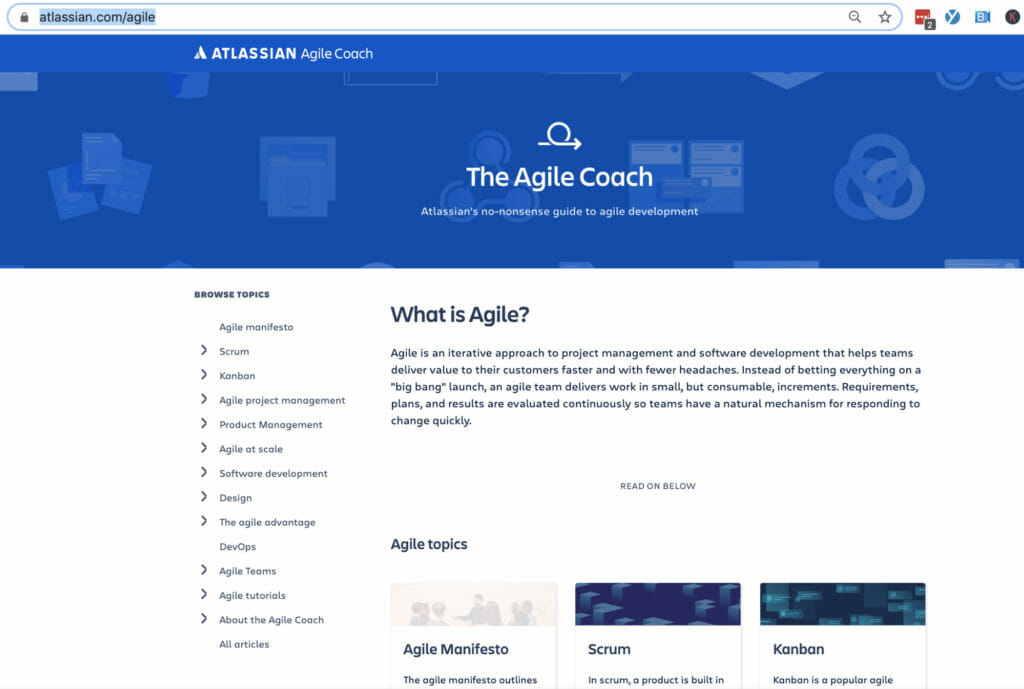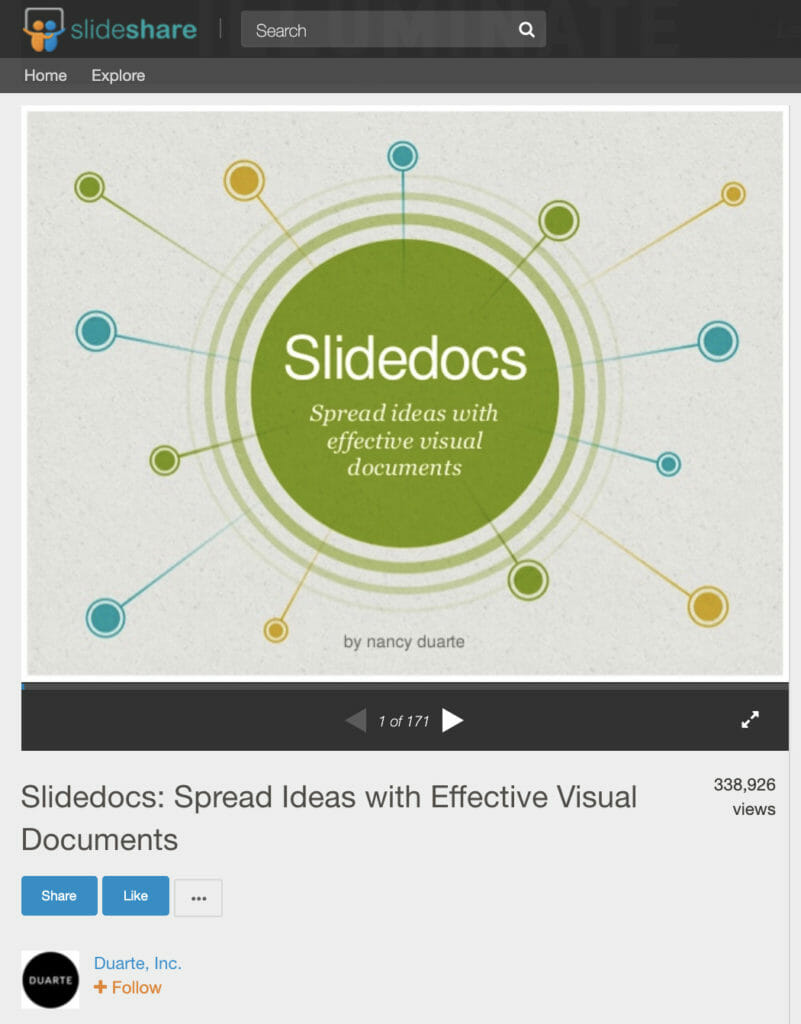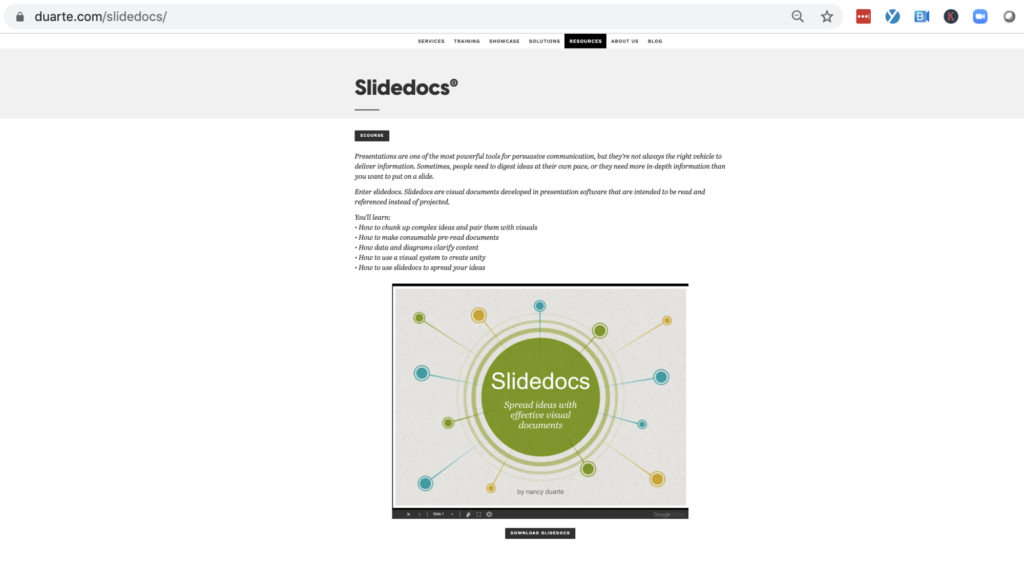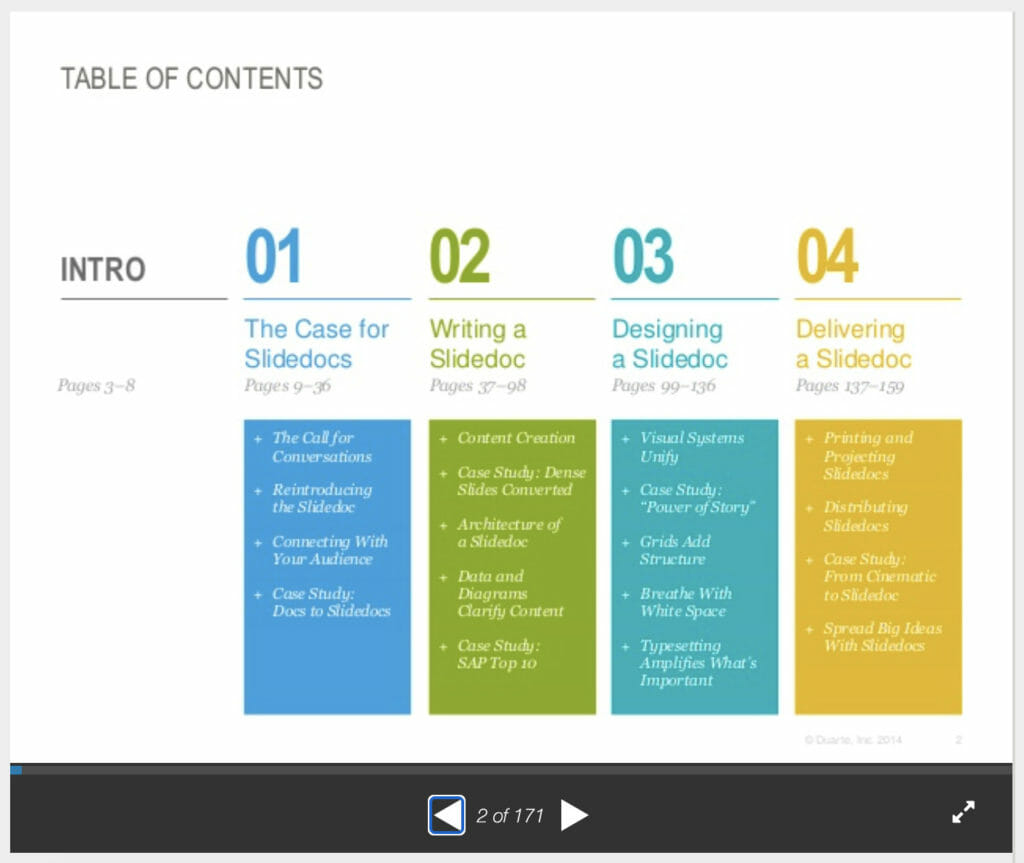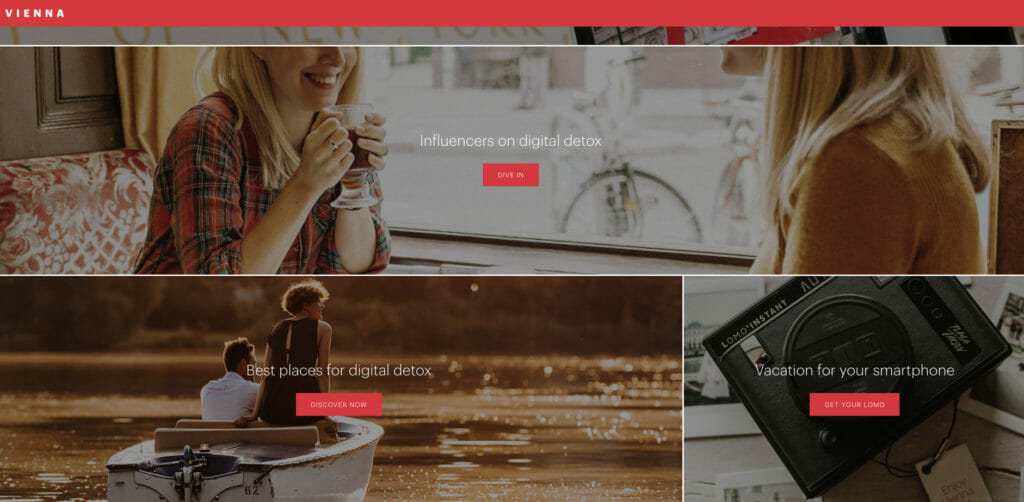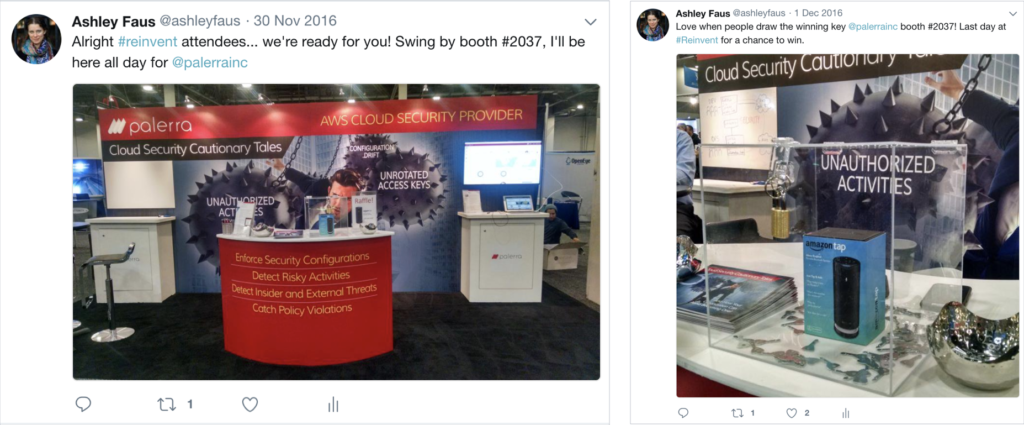I recently faced a familiar scenario: My team wanted to buy a new SaaS tool, so my boss asked me how much budget to request. I had no idea about pricing, so I Googled around and asked for pricing tiers from several vendors in the space.
Unfortunately, I received a handful of all too common, unhelpful responses.
“Let’s jump on a call for a demo and maybe we can talk about pricing at the end.”
“Please fill out this form to download our white paper so that you understand the value of solving this problem.”
“Have you checked out this blog post, this video, and this infographic? I can send you more links to more information about our product if needed.”
Despite me just wanting a rough estimate to forward to my boss, all the reps wanted to put me through their traditional funnel—when I didn’t even have a budget!
Several reps even tried to start by educating me about the problem, despite the fact that I had already already bought in on solving the problem and using a SaaS tool as the solution.
I wanted to buy from them, but they wouldn’t budge on moving me to the “purchase” phase of the funnel, all because I skipped the standard “awareness” and “consideration” phases—a huge mistake.
Table of contents
Breaking content out of the linear funnel
The traditional buyer’s funnel relies on linear decision-making, assuming that an audience will move neatly to become a prospect, then customer. In the past, we’ve assumed that potential customers would always arrive at our website after Googling a specific search term, and we’d make them “aware” of a problem and how our product solves this problem.
Awareness would then grow as they perused our landing pages, read our blog posts, and filled out a form to download an in-depth white paper. Filling out the form was a clear signal that the person was moving into the “consideration” phase of the funnel, intentionally trying to see exactly how our product solves the problem.
We’d then send them increasingly pushy emails to nurture them into deciding to make a purchase. And after some number of opens, clicks, and visits, we’d go in for the hard sale—a phone call from a sales rep, an office visit to provide a demo, and some kind of “buy now or else” discount on pricing. Straight-forward, logical, easy to track.
But despite being effective in the past, that’s not how modern humans work.
Content marketers need a new model that reflects how humans actually work. When reflecting on these challenges, I initially thought about a jungle gym, because it allows you to travel up, down, and sideways.
But the problem is that the goal is the same: to get to the top. It’s still a marketer forcing someone to go on a journey that ends in a purchase.
Enter the playground.
What’s the right way to play on a playground? Is it to go down the slide first? Up-and-down on the seesaw? Should you swing on the swings last? What’s the right way to use the equipment?
Playground designers intend for you to slide down the slide, but, of course, children always want to climb up the slide. And what about the parents sitting on the park bench, watching their kids play? Are they using the playground the wrong way? Of course not!
When you translate these ideas to your marketing content, you realize that you need to treat the buyer’s journey like a playground: People can enter and exit as they please, can go in any order, and can never use content the “wrong way.”
What does it look like to create a journey that delivers the right content, to the right person, in the right place, at the right time? To build a playground such that your audience experiences a seamless journey, no matter which path they take?
Choosing what to talk about
Instead of focusing on content for each phase of the traditional funnel, marketers need to create content at three depths: conceptual, strategic, and tactical. Keep in mind, however, that customers won’t necessarily go through these stages in order.
The conceptual level
This level covers the overarching idea, the “what” and why.” It helps the audience think about the problem space (not just the problem your product or service solves, but the long-term problem they face, which they might not even know about yet).
Metrics for this depth are rare and only long-term. A goal for readers of our content at Atlassian, where we make collaboration tools, might be “team cohesion,” for example.
Or, to think of it in another context: What does it mean to be healthy and fit? Most people agree that it is some combination of exercise and nutrition. But the answers differ among magazines like Muscle & Fitness, Runner’s World, and Yoga Journal.
If we choose Muscle & Fitness magazine as our lens to view the concept of health and fitness, the answer is focused on a high-protein diet, strength-focused goals, and aesthetics.
The strategic level
Strategic content gives the audiences the frameworks and processes they need to make the conceptual ideas reality, and helps them frame up the solution space (again, not your product or service but how to think about solutions).
We might have medium-term goals like “adopting agile methodologies” or “getting everyone on the same page with a project kick-off” as the outcomes for the reader.
To use the health and fitness example, you might focus on content about compound exercises, good form when lifting, and fast-digesting vs. slow-digesting protein.
The tactical level
The tactical, of course, focuses on the nitty gritty details. This content details prescriptive instructions on how to implement strategies to make a concept reality, and the regular habits and actions your audience needs to take to achieve the ideal outcome.
For Muscle & Fitness magazine, articles with titles like, “10 Tips to Grow Bigger Biceps” or “5 Recipes for Chicken Dinner this Week” fall into this category.
Someone might land on tactical content like chicken recipes on Pinterest as their first touchpoint. That might take them to a blog post with the recipe and a short explanation about the role of protein in your diet.
An in-line link or sidebar to related content might have a headline like, “Why weightlifters need a protein-heavy diet,” which leads to conceptual content about what it means to be fit and healthy, as defined by Muscle & Fitness magazine.
Alternatively, someone might be sitting in their doctor’s office for an annual physical and pick up a copy of the magazine while they wait. Here, they read strategic-level content about different sources of protein, which leads them to search for tactical-level content like chicken dinner recipes in the online publication.
How Atlassian used the conceptual, strategic, and tactical frameworks
At the conceptual level, we talk about how people work, not just what they produce. The goals are quite lofty: connection, trust, speed, belonging, and momentum.
The Atlassian Team Playbook offers a mix of conceptual, strategic, and tactical content. The “Why Team Playbook” addresses the conceptual depth by talking about the need for a common resource. Again, the goals at the conceptual level are hard to measure and focused on long-term outcomes.
It addresses the strategic depth with a Health Monitor for different types of teams, which allows the team to score eight attributes. We encourage teams to run a Health Monitor at least three times per year and compare ratings across each attribute over time. The metrics for this level are more concrete and objective.
For example, one attribute of a healthy team is that each project has a full-time owner. To test this, the facilitator asks the team, “Who is the full-time owner”? A unanimous agreement on a name without prompting supports a “thumbs up” rating on this attribute.
Based on the scoring from the Health Monitor, the site offers a range of exercises with step-by-step instructions, templates, and action items to improve teamwork.
For example, the project kick-off play requires the team to name the Driver, Approver, Contributor(s), and Informed members for the project, instead of just assuming that all members know their role.

All of this information is available for free, with no email address required, and no purchase commitment of any kind—a decision we made strategically.
Instead of hard-selling our products, we created templates within Confluence and retro boards within Trello to tie our products to the conceptual, strategic, and tactical information presented in the Team Playbook.
This links the tools we sell to the ideas we promote, allowing our audience to choose their own journey and build a long-term relationship with our brand.
In addition to brand-level content about teamwork, Atlassian product content follows a similar style: educate and empower, and showcase how teams need both practices and tools to succeed.
For example, the Jira Software team created a microsite dedicated to product-agnostic education about becoming an agile team.
The Agile Coach includes a mix of long-form articles, vidoes, and tutorials. At a conceptual level, the site addresses the origin, benefits, and practices from the Agile Manifesto.
At the strategic level, content offers context about each of the key rituals of agile, with guidance on how to choose which agile practices best fit your team. For example, Kanban and Scrum are two popular agile project management rituals.
The old model would tag this as “awareness” content for a “top-of-funnel” audience, but the playground model recognizes that agile practices are useful no matter where you are in your product or purchase journey (even if the journey ends in no purchase).
The site offers tutorials using Jira to help practitioners put the concepts and strategies into practice, again with step-by-step instructions. These tutorials are useful whether you’re considering the product or own the product.
Many organizations purchase a project management tool to streamline work without adopting agile practices, but Atlassian wants you to connect the tools and the practices. Thus, reviewing, onboarding, and setting up Jira is inherently tied to conceptual and strategic content about adopting agile practices.
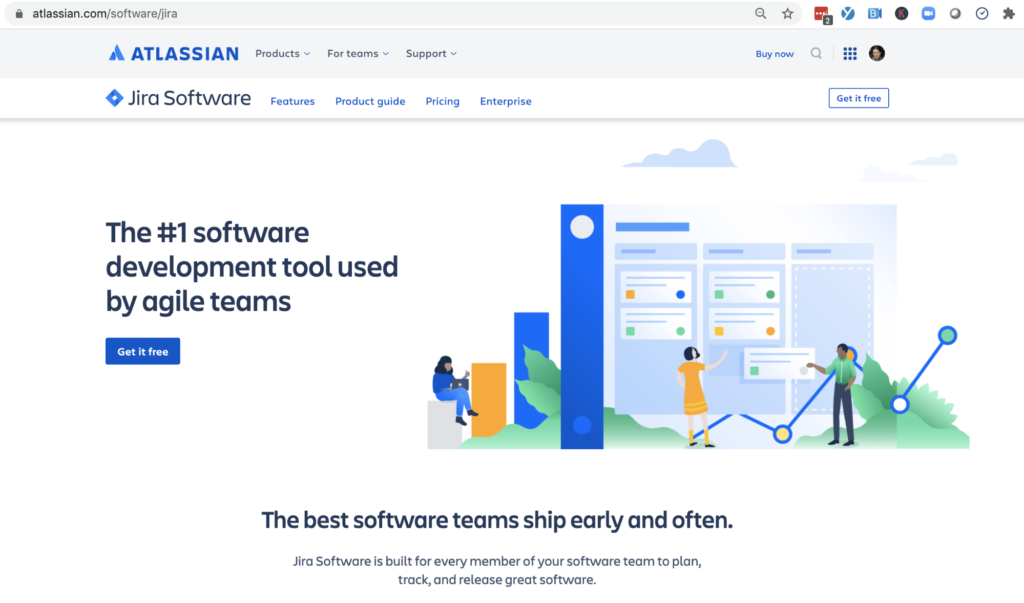
For example, one of our customers received an invite to an internal Jira training. The team was switching project management tools, and she was tasked with setting up her organization on Jira. In her search for tutorials, she landed on the Agile Coach.
She wasn’t familiar with agile methodology, but the new tool was based on these practices. She ended up learning about and implementing agile rituals like stand-ups in her team and, eventually, became responsible for driving agile adoption across people, practices, and tools throughout the organization.
She wasn’t looking to make a purchase, and she wasn’t considering that a product could solve her problem. The product decision was already made, without her input, but the search for practical tips led her to conceptual, strategic, and tactical content that made her a champion of both agile methodologies and Atlassian products.
Distribution framework
Once you’ve determined which narratives to address, you need to choose the asset type and outlets to share your content with the world.
When considering asset types, don’t get stuck in a rut thinking that “content” means a blog post or a white paper, content can be written (long-form or short-form), visual, audio, or interactive.
Outlets include paid, owned, and earned platforms, as well as a place to host and share content. The traditional funnel emphasizes owned platforms as hosting gated content helps track leads and conversions.
But your audience spends time on a variety of non-owned platforms, and their next action might not be a buying action, so consider which metrics you want to optimize for each asset, on each platform.
- Choose platforms based on industry research from analysts like Gartner and Forrester, benchmarking data from academia and consulting firms like MIT, Harvard Business Review, Deloitte, and McKinsey, and surveys of your audience. You can also test different platforms to understand how your audience interacts with that platform.
- Look at communities where your audience spends time. For example, developers spend time and engage on Reddit and HackerNews. Lifestyle brands are often showcased on Instagram.
For example, we surveyed prospects and customers and found that they were looking for educational content about agile methodology on YouTube. At the time, we didn’t have video content to address this need, and we were losing significant reach and engagement.
The Jira team created the “Agile Coach” series on YouTube. The videos were also added to the relevant pages on the Agile microsite, and the microsite was linked in the descriptions on YouTube.
The team experimented with different thumbnails, title lengths, and CTAs to subscribe to the company channel and watch the next video. Since the launch of the series, the Agile Coach has received hundreds of hours of watch time and positive feedback from our audience.
Duarte used a mix of outlets and asset types when they launched Nancy Duarte’s “Slidedocs” book. It was created in PowerPoint and released for free on Slideshare.
The team added call-outs throughout the book to access downloadable content, like diagrams and two PowerPoint templates. They also created a landing page to promote a paid ecourse with related content, and an embedded version of the book.
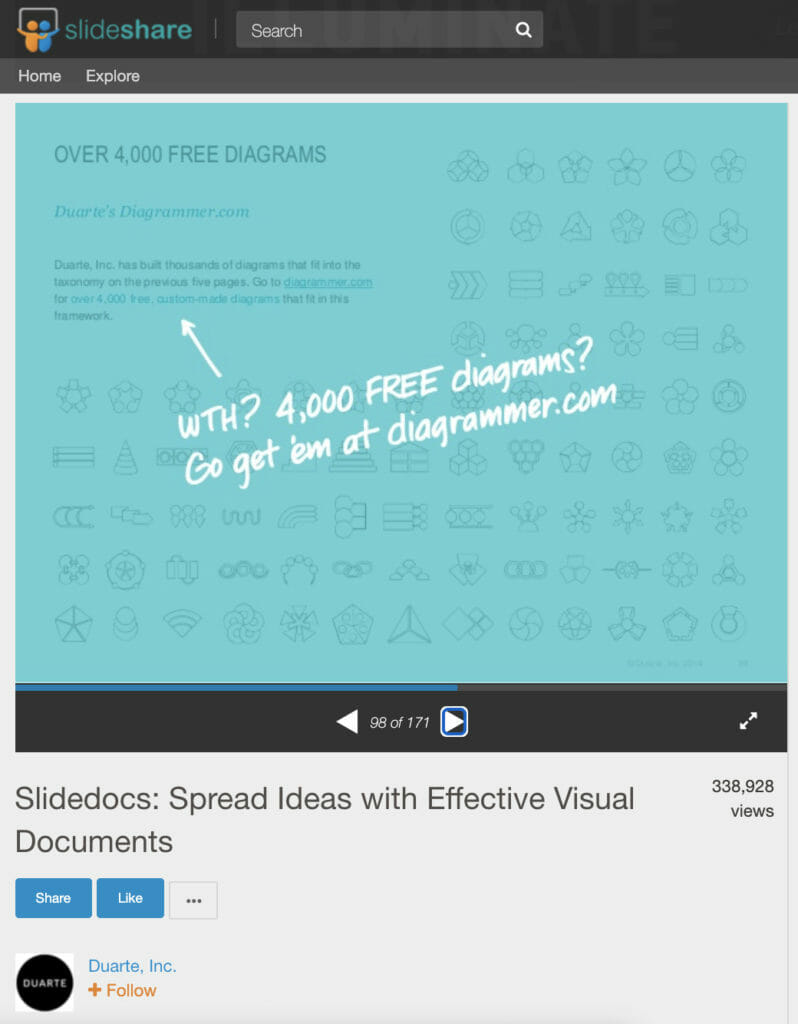

The Slidedocs book showcases all three content depths:
- At the conceptual level, Nancy Duarte argues that communication has changed, and we need to choose the right tool for our communication needs.
- At the strategic level, she lays out different communication tools, including introducing the slidedoc as a new medium. She shares a spectrum of dense documents, slidedocs that pair words and visuals, and presentations, which use visuals and storytelling, along with recommendations for when and where to use each medium.
- Finally, the bulk of the content in the book focuses on the tactics to create your own slidedocs, with step-by-step instructions for writing, designing, and delivering a slidedoc.
Remember, all assets and all channels do not need to accomplish all things at all times. Are you optimizing for reach, engagement, or CTR? Do you intend to engage on an owned platform or a third-party platform? There are trade-offs for each asset.
When Atlassian launched a major update to Jira, the team used 1:1 engagement on social media to address questions and concerns. Individual Product Managers and Product Marketers reached out from their personal Twitter handles to respond directly.
We partnered with the corporate social media team to coordinate responses in a dedicated Slack channel and incorporated the individual responses into an FAQ for the team to use going forward.
The corporate team tracked responses and tagged at-mentions with positive, neutral, or negative sentiment labels to allow the team to view success. Verbatim tweets and thread links were included to improve responses and track sentiment changes.
And it’s not just tech companies moving away from easy-to-track metrics like impressions.
Here’s a counter-intuitive example: the “Visit Vienna, not #vienna” campaign. The city explicitly asked people not to take photos and share them on social media using a hashtag.
Instead, they asked people to pick up an instant camera at the city visitor’s center and take only 10 photos for the entire trip. They created a website of local vendors and locations, with guided paths depending on the type of vacation you prefer.
They used out-of-home advertising and strategic engagement with influencers to generate conversation and impressions, but when you limit the conversation to in-person venues, it’s much harder to measure.
How would they measure success without the usual reach of a hashtag?
Increase in requests for tourists visas, revenue lift for vendors featured, and the number of people who picked up a camera could be measured and correlated more strongly with a “buy” action than simply using a hashtag.

Uniting content across multiple touch-points
It’s difficult to unite and track online and offline experiences. The previous examples showcase multiple digital outlets, with handy tracking via marketing automation, form fills, or URLs with UTM codes.
But what does it look like to meet your audience wherever they are, with a cohesive story across all platforms?
During my time at a Cloud Access Security Broker, we created a booth giveaway that gave us multiple entry points into relevant topics and social media fodder.
We placed an Amazon Tap in a locked case and had a bowl full of what looked like identical keys, with a small number of keys that actually worked with the lock. Attendees could choose a key and if it opened the lock on the case, they won the tap.
Many attendees were skeptical that a working key actually existed in the bowl, so when someone opened the box, we’d snap a picture for the company Twitter feed, tag them, and ask them to re-tweet the photo.

But it wasn’t just about a quirky challenge at a security conference. The storytelling tie-ins were perfect: Who has keys? How do you know if someone took a key and gave it to someone else? How do you know who’s used the keys most recently? What happens to the keys after the show?
We used real-life stories of customers we’d helped answer these questions and tied all the messaging together in a downloadable ebook that we posted on Slideshare and used in our follow-up emails to people we scanned at the booth.
We also shared the ebook to our company social media pages so that followers who didn’t attend the trade show in person could still participate and learn.
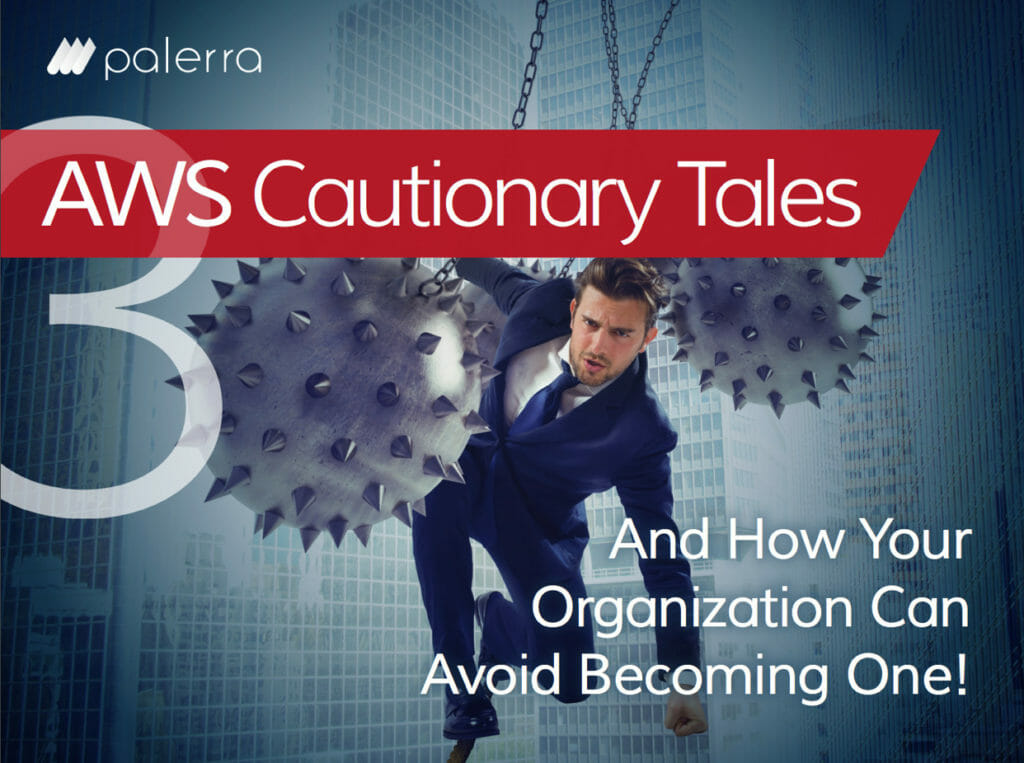
Throughout this process, we tracked a significant increase in lead scans at the booth, driven in large part by our booth traffic and give-away engagement during the opening night party in the expo hall.
We saw an increase in followers and engagement on our social media channels, as well as views of the ebook on Slideshare. And, finally, the open-rate and click-through rate on our post-event emails was higher than past events because we referenced the popular give-away in the subject line, and our ebook tied to their time at the booth.
Conclusion
The traditional funnel seeks to rush people to a purchase with as few touchpoints as possible. But the content playground seeks to create a seamless, non-linear journey across all touchpoints.
Instead of focusing solely on a short-term purchase, marketers with a playground mindset focus on creating a delightful experience, educating and empowering their audience, and building long-term, trust-based relationships.


